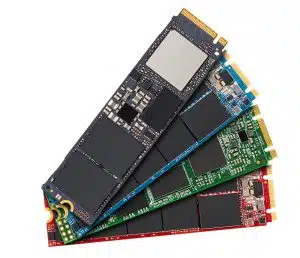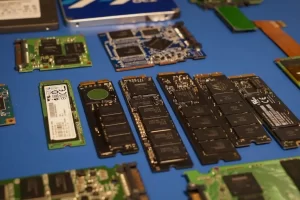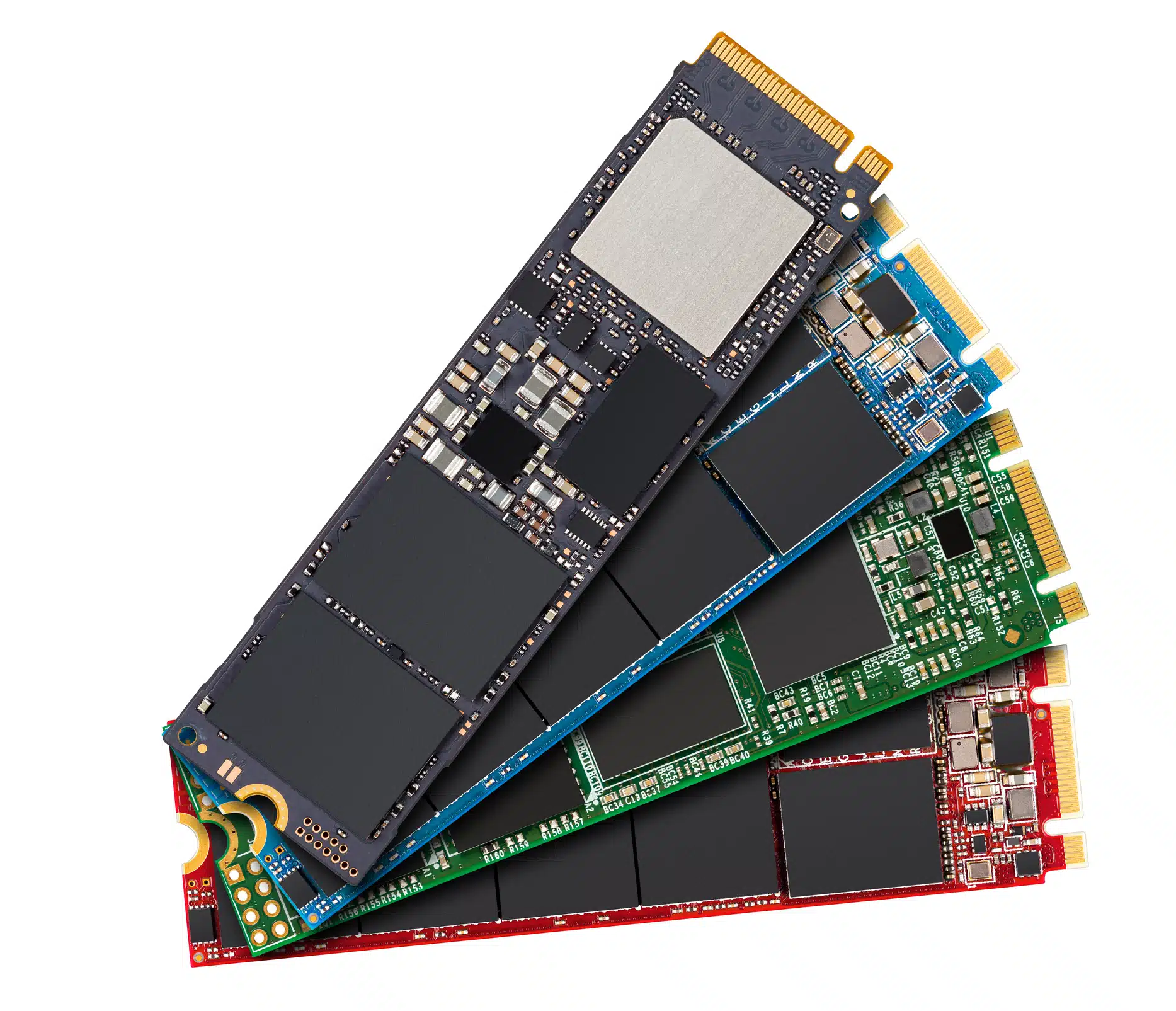SSD Data Recovery Australia: Expert Services for Failed SSDs
Table of Contents
Has your solid state drive suddenly failed, leaving you without access to your important files? Whether it’s crucial work documents or irreplaceable family photos, a dead SSD can be incredibly stressful.
The good news is that professional services can help. At Payam Data Recovery, we specialise in recovering data from failed SSDs, offering peace of mind to customers across Australia.
Why Do SSDs Fail? Reasons You May Need SSD Data Recovery Australia
Although SSDs are more durable than traditional hard drives, they can still fail for several reasons, making data recovery services essential:
- Wear and Tear: SSDs have a limited number of write cycles. Heavy usage over time can cause memory cells to wear out, potentially requiring data recovery.
- Firmware Issues: Corruption in the SSD’s firmware can make the drive unreadable, necessitating expert intervention.
- Liquid Damage: Spills can damage SSDs, especially in devices like MacBooks where the SSD is integrated into the motherboard, often requiring professional recovery.
Challenges of SSD Data Recovery in Australia
Data recovery from a failed SSD is complex due to the technology SSDs use. Here are some challenges:
- Built-in Encryption: Many SSDs use automatic encryption, requiring specialised tools to access data.
- Complex Data Storage: SSDs spread data across multiple cells, complicating reconstruction during recovery.
- Custom Firmware: Each SSD brand uses unique firmware, demanding specific expertise for successful recovery.

Why Choose Payam Data Recovery for SSD Data Recovery Australia?
Payam Data Recovery is a trusted name for individuals, businesses, and government organisations across Australia. Here’s why we’re the best choice:
- Advanced Electronics Lab: Our team can perform complex procedures like chip-off or chip transplants for effective recovery.
- Specialised Tools: We use cutting-edge equipment to handle firmware issues, encryption, and liquid damage.
- Experienced Team: Our engineers have extensive experience with complex SSD cases, ensuring the best outcomes.
Our SSD Data Recovery Australia Process
We follow a meticulous process to ensure the highest success rate for data recovery:
- Initial Evaluation: We assess your SSD to identify the failure cause, crucial for effective recovery.
- In-Depth Diagnosis: Using specialised tools, we pinpoint issues like firmware corruption.
- Secure Data Extraction: We extract your data in secure labs across Australia, ensuring safety.
Tips to Prevent SSD Failure and Avoid SSD Data Recovery Australia
Here are some steps to protect your data and reduce the need for recovery services:
- Regular Backups: Back up data to cloud services or external drives to minimise data loss.
- Monitor SSD Health: Use tools to detect issues early, preventing failures.
- Reduce Write Operations: Minimise unnecessary writes to extend your SSD’s life.
Below, I’ve compiled two concise lists tailored for inclusion in the article you referenced. The first list details the most popular SSD brands and their top models based on market trends and consumer preferences in 2025. The second list outlines the different SSD connection types, including M.2, NVMe, SATA, and Apple MacBook SSDs, with brief descriptions. These lists are formatted with headings and bullet points for easy integration into your article.
Most Popular SSD Brands and Models
Here are the leading SSD brands and their most popular models in 2025, reflecting high sales, consumer reviews, and industry recommendations:
- Samsung
- 990 Pro (NVMe): Top-performing PCIe 4.0 SSD, ideal for gaming and professional workloads.
- 870 EVO (SATA): Best-in-class 2.5-inch SATA SSD for legacy system upgrades.
- 990 EVO (NVMe): Budget-friendly NVMe with PCIe 4.0/5.0 support.
- Western Digital (WD)
- Black SN850X (NVMe): High-speed PCIe 4.0 SSD, popular for gaming and macOS compatibility.
- Blue SN580 (NVMe): Affordable PCIe 3.0 SSD for budget builds.
- Green M.2 SATA: Entry-level M.2 SATA SSD for older systems.
- Crucial (Micron)
- T500 (NVMe): Cost-effective PCIe 4.0 SSD with excellent performance.
- MX500 (SATA): Reliable 2.5-inch SATA SSD for budget-conscious users.
- Apple
- MacBook SSD (Proprietary NVMe): High-performance SSDs in MacBooks, not sold separately.
- Intel
- Optane NVMe (e.g., 905P): Niche, low-latency SSD for specialized workloads, limited availability.
SSD Connection Types
SSDs use various connection types, each suited to specific devices and performance needs. Below are the primary types in 2025:
- M.2
- A compact form factor for SSDs, available in SATA or NVMe variants. Common sizes include 2280 (22mm wide, 80mm long). Used in laptops and desktops (e.g., Samsung 990 Pro, WD Green M.2 SATA).
- NVMe (Non-Volatile Memory Express)
- A high-speed interface using PCIe lanes, offering faster data transfer than SATA. Typically M.2 or U.2 form factors (e.g., Samsung 990 Pro, WD Black SN850X, Intel Optane).
- SATA (Serial ATA)
- A slower, legacy interface used in 2.5-inch or M.2 SSDs. Common for budget or older systems (e.g., Samsung 870 EVO, WD Green M.2 SATA).
- Apple MacBook SSD (Proprietary NVMe)
- Custom NVMe SSDs designed for MacBooks, often soldered in newer models. Optimized for macOS but not user-upgradable or sold separately.
Frequently Asked Questions About SSD Data Recovery Australia
Can You Recover Data from a Worn-Out SSD?
Yes, we can often recover data from SSDs failed due to wear, using advanced techniques.
How Much Does SSD Data Recovery Cost in Australia?
Costs range from $375 to $1500, depending on complexity. Get a free quote by submitting your job.
Can You Recover Data from Liquid-Damaged SSDs?
Yes, we handle liquid-damaged SSDs in our cleanroom facilities, providing expert recovery.
Is DIY SSD Recovery Safe?
DIY attempts can cause further damage. Trust professionals for the best chance of success.
How Long Does SSD Data Recovery Take?
Recovery can take 1 to 2 days or up to 3 to 4 weeks for complex cases. We provide an estimated timeline with your free assessment.

Contact Payam Data Recovery for Expert SSD Data Recovery Australia
Don’t let a failed SSD lead to permanent data loss. Payam Data Recovery offers reliable services, handling all failure types.
From Sydney to Perth, our team is ready to help. Get a free quote today by contacting us.
Learn more about our services at Payam Data Recovery

